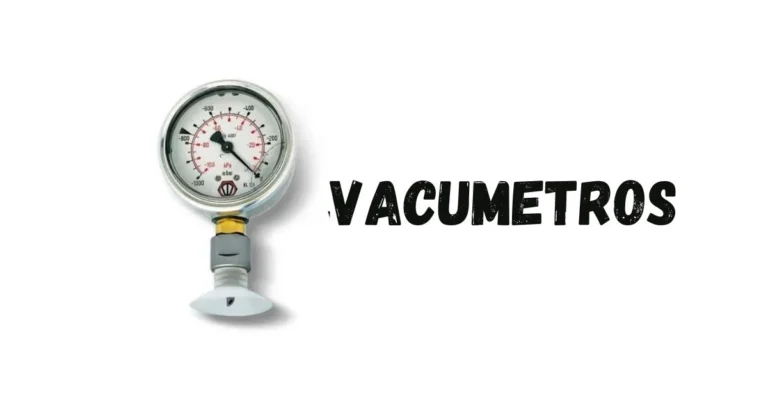Introduction to Vacumetros
In the realm of modern engineering, precision measurement is paramount. One of the key instruments that have revolutionized precision measurement is the vacumetro. Derived from the combination of “vacuum” and “meter,” vacumetros are devices designed to measure the pressure in a vacuum system accurately. Their application spans across various industries, including automotive, aerospace, and manufacturing, making them indispensable tools in ensuring the reliability and efficiency of numerous engineering processes.
The Evolution of Vacumetros
Early Beginnings
The concept of measuring vacuum dates back to the 17th century with the invention of the barometer by Evangelista Torricelli. This early instrument paved the way for the development of more sophisticated vacuum measurement devices. The term “vacumetro” itself became more prevalent in the 20th century as industries began to require more precise measurement tools for complex engineering tasks.
Technological Advancements
The evolution of vacumetros has been marked by significant technological advancements. It relied on mechanical gauges that used a diaphragm or Bourdon tube to measure pressure differences. However, with the advent of electronic technology, modern vacumetros now incorporate digital sensors and microprocessors, allowing for more accurate and reliable measurements.
Types of Vacumetros
Mechanical Vacumetros
Mechanical vacumetros are the traditional type of vacuum gauges. They operate based on the deformation of a mechanical element in response to pressure changes. Common types include:
- Bourdon Tube Vacumetros: Utilize a coiled tube that straightens as pressure decreases.
- Diaphragm Vacumetros: Use a flexible diaphragm that deflects under pressure differences.
- Piston Vacumetros: Employ a piston moving within a cylinder to measure pressure.
Electronic Vacumetros
Electronic vacumetros have largely supplanted mechanical ones due to their enhanced accuracy and ease of use. It use sensors and electronic circuits to measure pressure. Key types include:
- Capacitance Manometers: Measure pressure by detecting changes in capacitance caused by diaphragm deflection.
- Ionization Gauges: Determine pressure by ionizing gas molecules and measuring the resulting ion current.
- Pirani Gauges: Use a heated filament and measure pressure based on thermal conductivity changes.
Applications of Vacumetros
Automotive Industry
In the automotive industry, It play a crucial role in engine diagnostics and performance optimization. They are used to measure manifold vacuum, which provides essential information about the engine’s condition and efficiency. Accurate vacuum measurements help in tuning the engine, diagnosing issues, and ensuring optimal performance.
Aerospace Industry
They are vital in the aerospace industry for testing and maintaining vacuum systems used in spacecraft and aircraft. These systems require precise vacuum conditions to function correctly, and any deviation can lead to catastrophic failures. Vacumetros ensure that the vacuum levels are within the required specifications, thus safeguarding the integrity of aerospace components.
Manufacturing Industry
In manufacturing, They are essential for processes that require controlled vacuum environments, such as semiconductor fabrication, vacuum packaging, and coating applications. Precise vacuum measurement ensures that these processes are carried out under optimal conditions, leading to high-quality products and efficient operations.
Benefits of Using Vacumetros
High Precision
One of the primary benefits of using it is its high precision. Modern vacumetros can measure vacuum levels with great accuracy, often down to micro or nanometer ranges. This precision is critical in applications where even the slightest deviation can lead to significant issues.
Reliability
They are designed to provide reliable and consistent measurements. This reliability is crucial in industries where consistent vacuum conditions are necessary for product quality and process efficiency. Electronic vacumetros, in particular, offer superior reliability due to their advanced sensor technology and robust construction.
Versatility
They are versatile instruments that can be used in a wide range of applications. From automotive diagnostics to aerospace testing and manufacturing processes, It provide valuable insights into vacuum conditions, making them indispensable tools in modern engineering.
Challenges and Solutions in Using Vacumetros
Calibration
One of the challenges in using vacumetros is ensuring proper calibration. Regular calibration is necessary to maintain accuracy and reliability. Many modern it come with self-calibration features or can be calibrated using reference standards, making this process more manageable.
Environmental Factors
Environmental factors such as temperature and humidity can affect the accuracy of vacumetros. To mitigate this, advanced it are equipped with temperature compensation features and are designed to operate within specific environmental conditions, ensuring accurate measurements regardless of external factors.
Maintenance
Regular maintenance is essential to keep it functioning correctly. This includes cleaning, checking for leaks, and replacing worn-out components. Manufacturers provide detailed maintenance guidelines to help users keep their it in optimal condition.
Future Trends in Vacumetro Technology
Integration with IoT
The integration of vacumetros with the Internet of Things (IoT) is an emerging trend. IoT-enabled it can provide real-time data and remote monitoring capabilities, enhancing their utility in various industrial applications. This connectivity allows for better data analysis, predictive maintenance, and improved process control.
Miniaturization
The trend towards miniaturization is also impacting vacumetro technology. Smaller, more compact vacumetros are being developed for applications where space is limited. Despite their small size, It maintain high accuracy and reliability, making them ideal for modern engineering environments.
Enhanced Sensor Technology
Advancements in sensor technology continue to improve the performance of vacumetros. New materials and sensor designs are being developed to increase sensitivity, reduce response time, and enhance durability. These improvements will further solidify the role of vacumetros in precision measurement.
Conclusion
Vacumetros has become an integral part of modern engineering, providing precise and reliable vacuum measurements across various industries. Their evolution from mechanical to electronic devices has significantly enhanced their accuracy and versatility. As technology continues to advance, It will undoubtedly play an even more critical role in ensuring the efficiency and reliability of engineering processes. The future of vacumetro technology looks promising, with trends like IoT integration, miniaturization, and enhanced sensor technology paving the way for even greater advancements in precision measurement.
Also Read: Pixzle: Redefining Digital Challenges and Creativity
